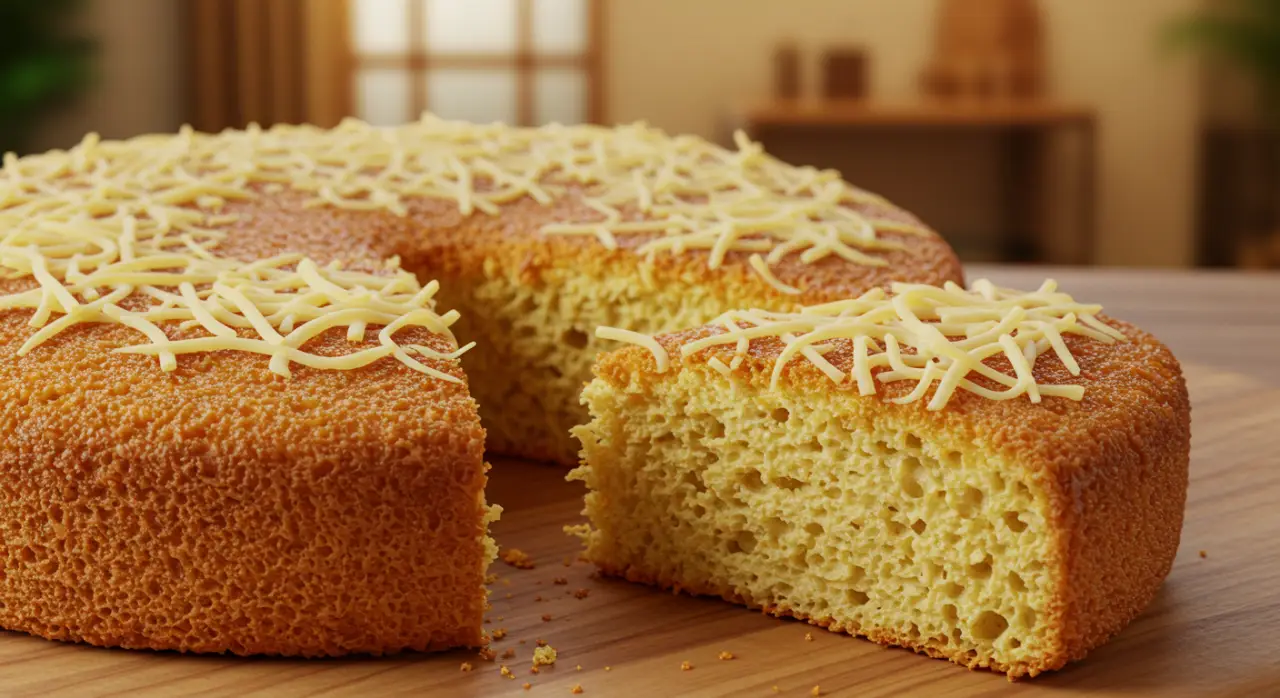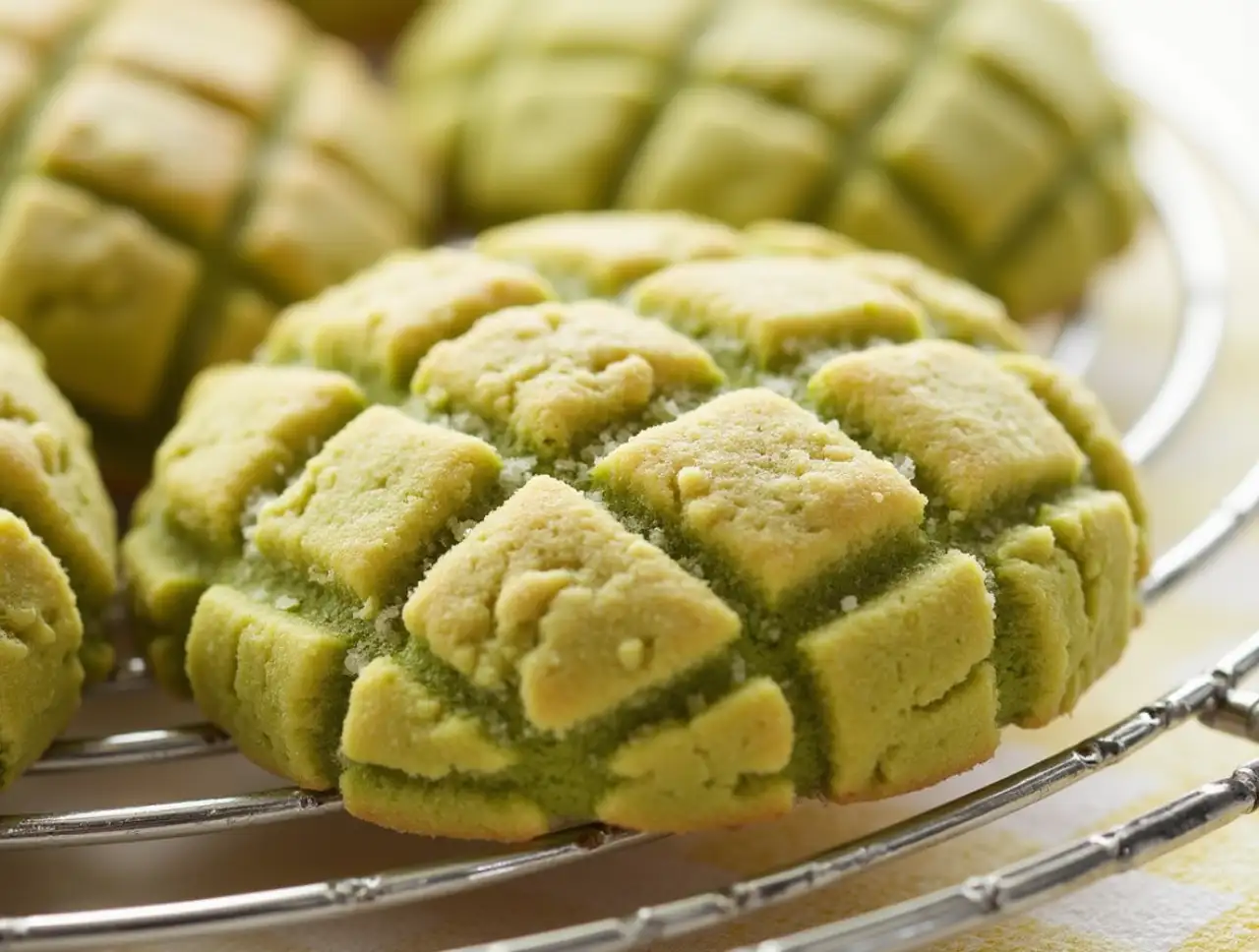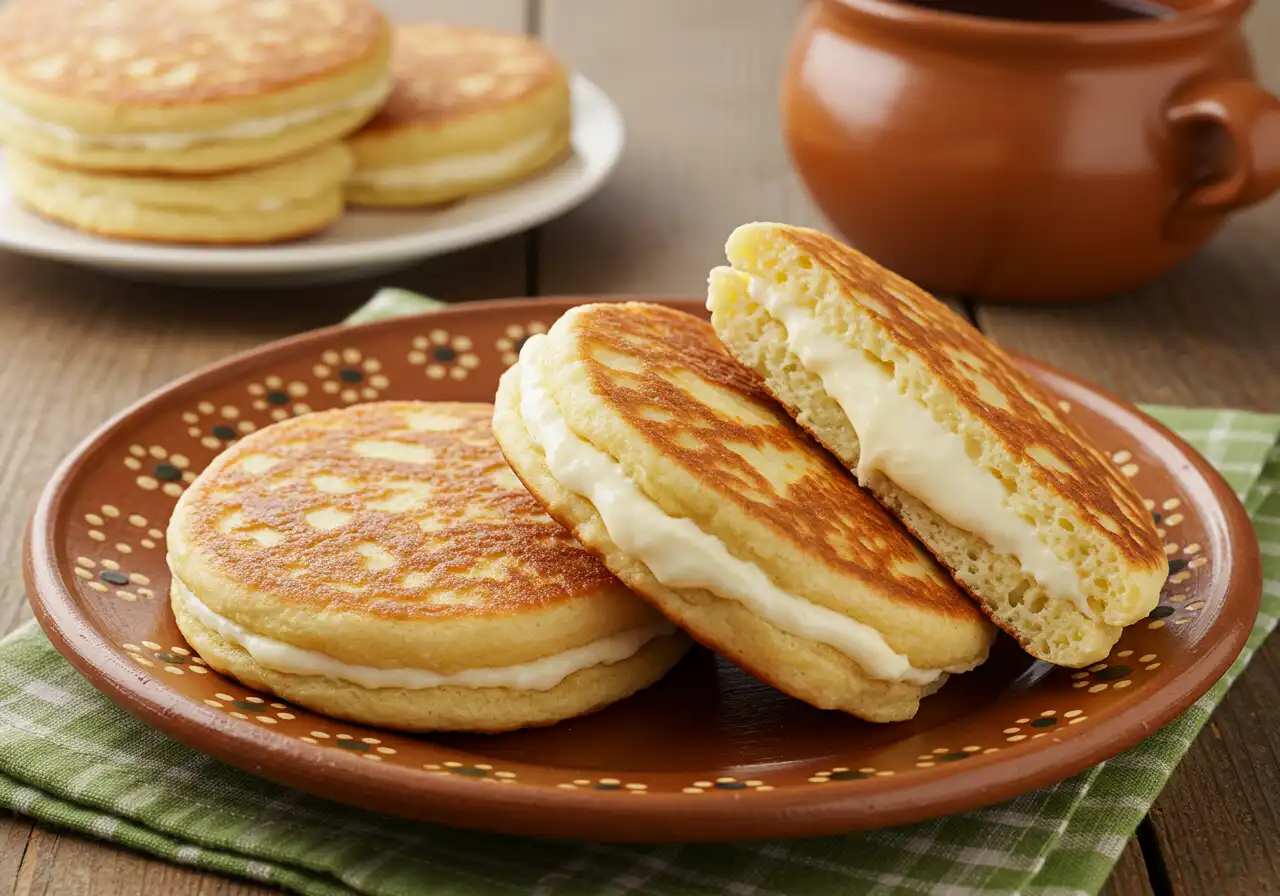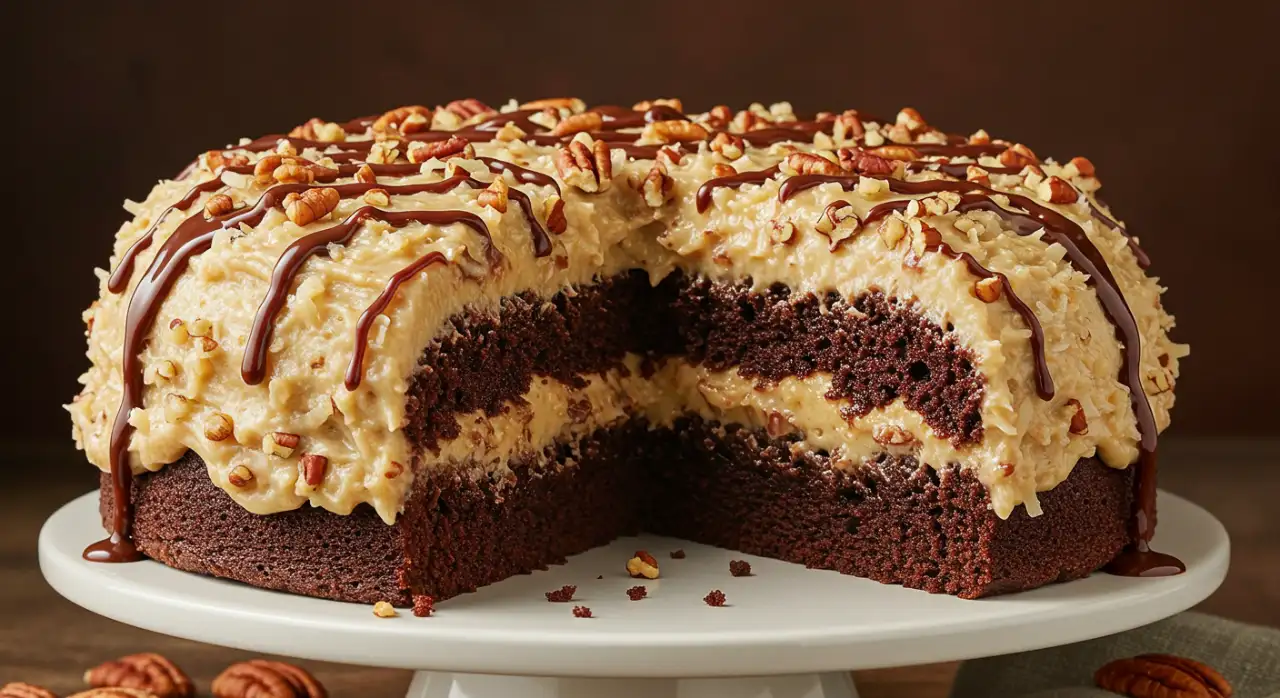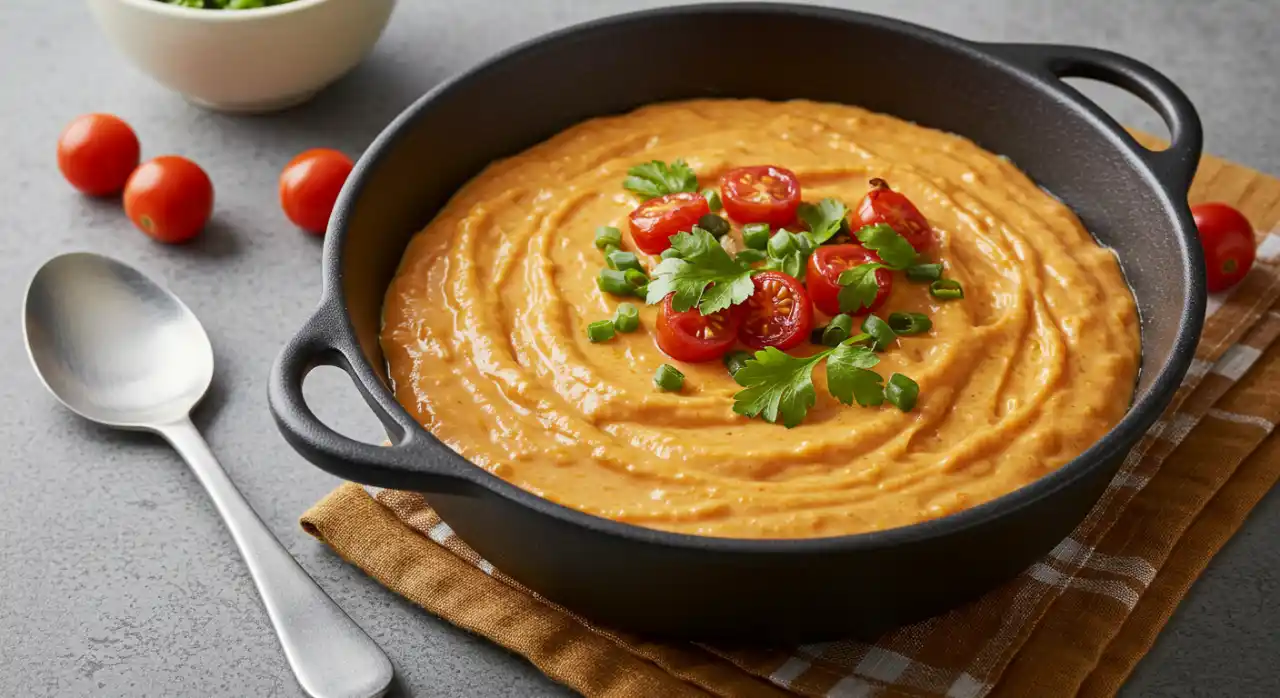Hey there, foodie friends! If you’re looking for a sweet treat that’s both comforting and exciting, let me introduce you to the cassava cake recipe. This dessert is a staple in many cultures, especially in Southeast Asia and Latin America. It’s got this amazing texture—soft, chewy, and just a little gooey—and it pairs perfectly with coffee, tea, or even a cold glass of milk. In this guide, we’ll walk through everything you need to know about making cassava cake, from picking the right ingredients to adding your own creative twists. So grab your apron and let’s dive into this scrumptious adventure!
Table of Contents
Introduction to the Classic Cassava Cake Recipe
What is Cassava Cake?
If you’ve never tried cassava cake before, don’t worry—you’re about to discover something truly special. Cassava cake is made using grated cassava, which gives it its signature chewy texture. This dessert has been around for ages, passed down through generations in countries like the Philippines, Brazil, and beyond. Honestly, it feels like a hug in cake form! You know how some desserts remind you of home? Well, cassava cake does that but with an extra kick of tropical flavor.
Let’s face it, though: not everyone knows what cassava is. For those who don’t, think of it as a starchy root vegetable kind of like yuca or potato. When grated and mixed with coconut milk, sugar, and eggs, it transforms into pure magic.
Why Cassava Cake is a Must-Try Dessert
Here’s the deal: cassava cake isn’t just any old dessert. Its unique combination of flavors makes it stand out. The sweetness from the sugar balances beautifully with the richness of coconut milk, creating a taste that’s hard to resist. Plus, it’s super versatile! Whether you’re baking it for a family gathering, a potluck, or just because you want something yummy, this cake fits the bill every time.
Oh, and here’s a fun fact: cassava cake can be customized endlessly. Want to add mango slices on top? Go for it! Prefer a vegan version? No problem—we’ll cover all that later. Stick around because we’ve got plenty of tips and tricks coming up to help you nail this classic cassava cake recipe like a pro.
Essential Ingredients for Your Cassava Cake Recipe
Key Ingredients in a Traditional Cassava Cake Recipe
Alright, let’s talk about the heart and soul of your cassava cake recipe: the ingredients! First up, you’ve got grated cassava. This is the star of the show, so make sure it’s fresh or high-quality if you’re using pre-grated stuff. Grating cassava yourself might take some effort, but trust me, it’s worth it for that authentic taste. Plus, it’s kind of therapeutic once you get into a rhythm.
Next, we have coconut milk. Now, here’s the thing—coconut milk adds that rich, creamy flavor that ties everything together. You can use canned coconut milk or even homemade if you’re feeling adventurous. Just be sure to shake the can well before opening it, okay? No one likes lumpy batter!
Then there’s sugar. Some folks like their cassava cake super sweet, while others prefer a milder touch. It’s all about finding what works for you. Oh, and don’t forget the eggs—they help bind everything together and give the cake its fluffy texture.
Substitutions and Variations
Now, not everyone has access to traditional ingredients, and that’s totally fine. For instance, if you’re out of fresh cassava, frozen cassava works just as well. Thaw it first, though, or else you’ll end up with icy chunks in your mix. And hey, if you’re going for a healthier twist, try substituting refined sugar with honey or maple syrup. Works like a charm!
If you’re vegan, no worries—you can swap regular eggs with flax eggs or applesauce. As for the coconut milk, almond milk or oat milk are great alternatives. The beauty of this cassava cake recipe is that it’s flexible enough to adapt to your needs without losing its charm.
So, whether you stick to the classics or experiment with new ideas, these ingredients will set you on the right path. Ready to move on? In Part 3, we’ll break down the step-by-step process of making this delightful dessert!
Step-by-Step Instructions for Making Cassava Cake
Preparing Your Ingredients for the Cassava Cake Recipe
Alright, chef-to-be, let’s prep those ingredients! Start by grating your cassava if you haven’t already. If you’re using pre-grated cassava, measure it carefully—it should be around 4 cups for most recipes. While you’re at it, crack those eggs into a separate bowl and whisk them lightly. Why separately? Because mistakes happen, and nobody wants shell bits in their cake.
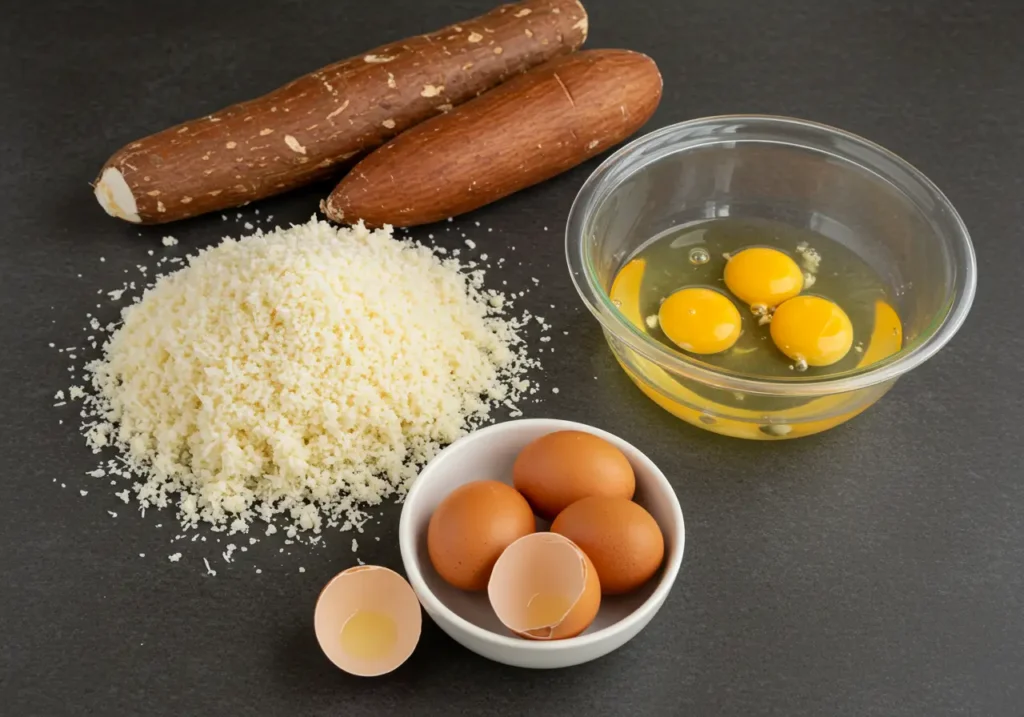
Now, pour your coconut milk into another mixing bowl. Add the sugar gradually, stirring until it dissolves completely. This step ensures your batter won’t have any grainy bits later on. Pro tip: taste the mixture as you go. Adjust the sweetness level based on your preference. After all, it’s your cassava cake recipe, so make it yours!
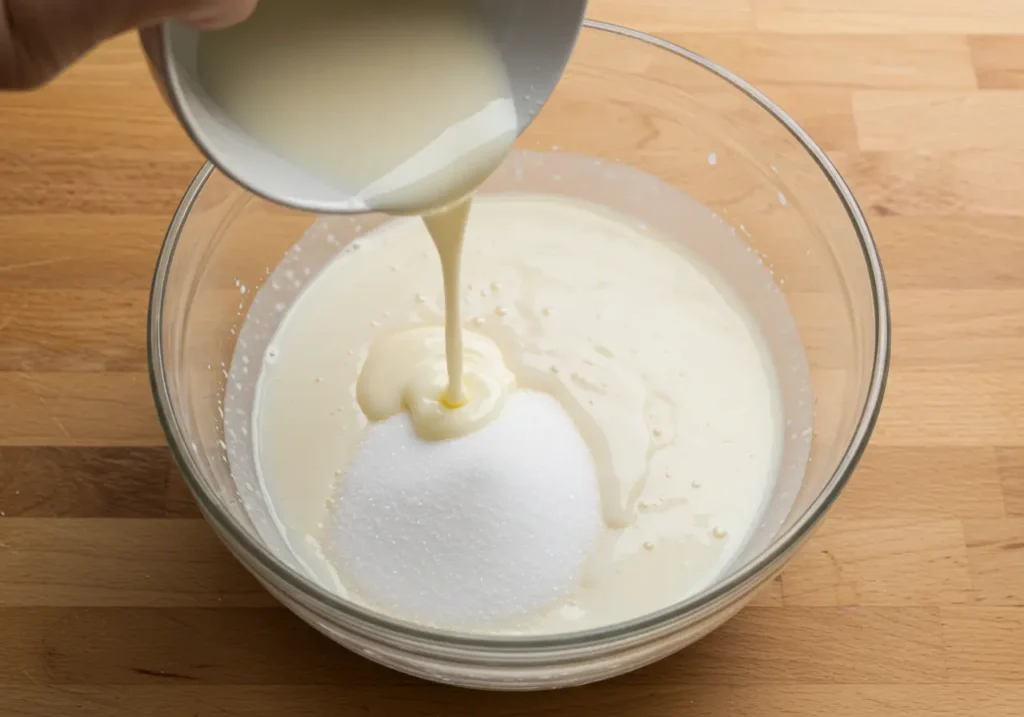
Mixing and Baking the Perfect Cassava Cake
Once everything’s prepped, it’s time to combine the magic. Gradually fold the grated cassava into the coconut milk mixture. Be gentle here; you don’t want to overmix or the cake might turn dense. Keep stirring until the cassava is evenly coated. See how smooth and silky the batter looks? That’s what we’re aiming for.
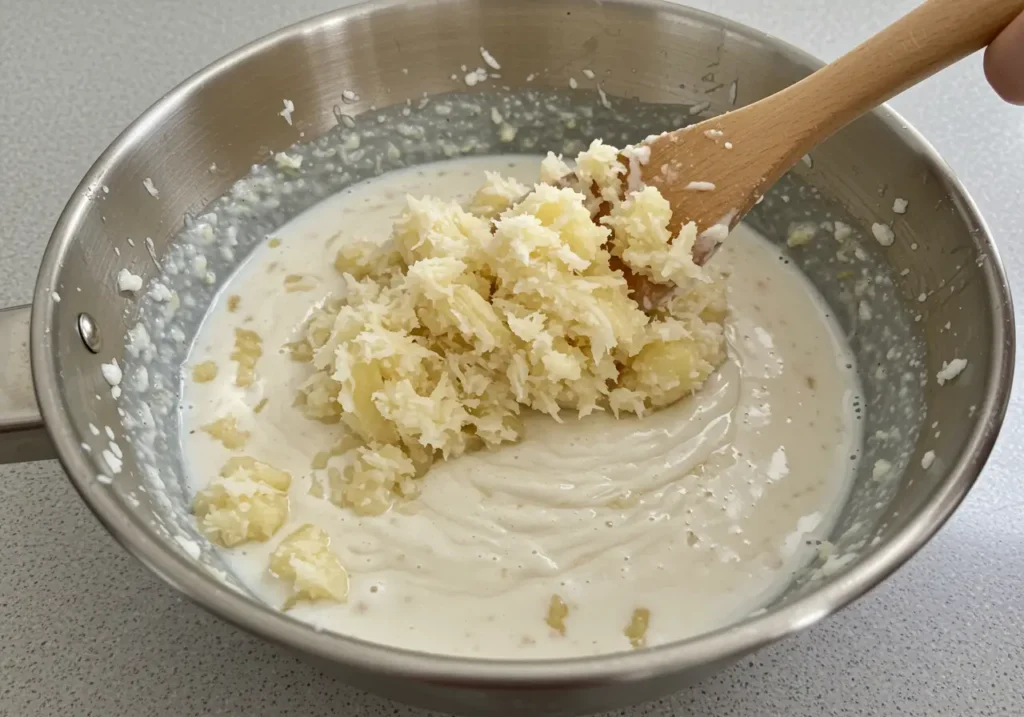
Now, pour the batter into a greased baking pan. A rectangular one works best, but feel free to use whatever fits your oven. Pop it in the oven at 350°F (175°C) and bake for about an hour. But wait—don’t open the oven door too soon! Letting the heat escape could ruin the texture. Instead, check after 50 minutes. If the top is golden brown and a toothpick comes out clean, you’re golden. Literally.
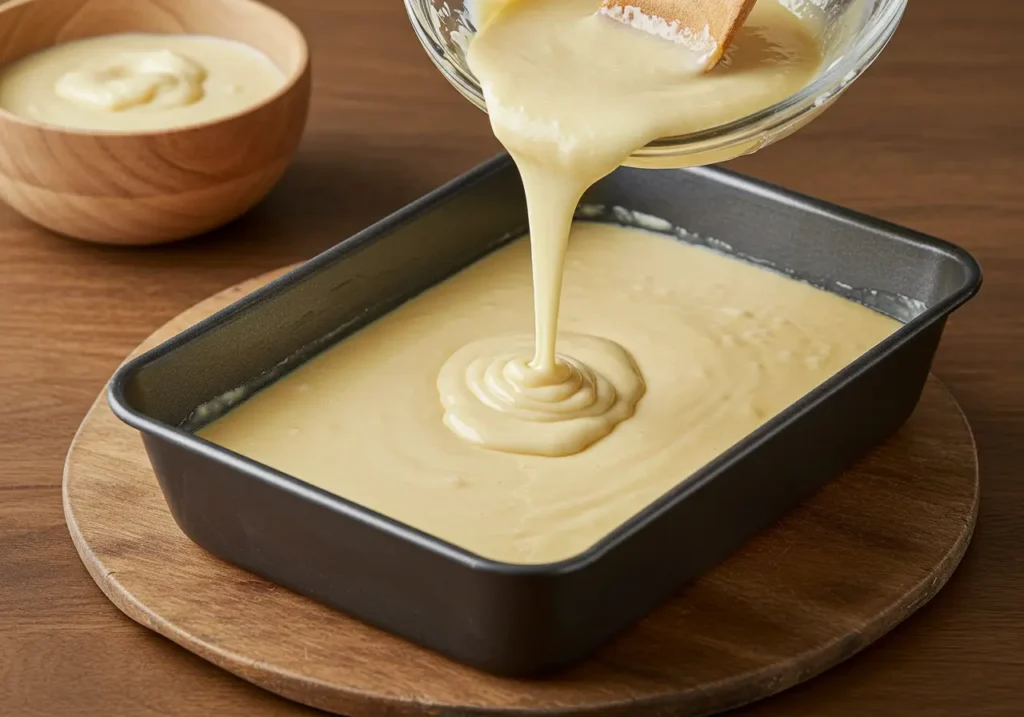
Troubleshooting Common Issues
Oh, and speaking of issues, let’s address a few common ones. Did your cake come out too dry? Maybe the oven was too hot or the baking time too long. On the flip side, if it’s gooey in the middle, give it a few extra minutes. Overmixing can also lead to a tough texture, so remember to keep things light and airy.
There you have it—a foolproof guide to baking your very own cassava cake recipe. Feeling confident yet? Great! Next up, we’ll explore creative twists to spice things up. Stay tuned!
Creative Twists on the Traditional Cassava Cake Recipe
Adding Flavor Enhancements to Your Cassava Cake Recipe
Alright, now that you’ve mastered the basics of the classic cassava cake recipe, let’s have some fun with it! One of the coolest things about this dessert is how easily you can tweak it to suit your tastes. For instance, why not throw in some shredded coconut for extra texture? Or maybe sprinkle a bit of cinnamon for warmth—it pairs beautifully with the natural sweetness of cassava.
If you’re feeling tropical, consider adding diced mango chunks or pineapple bits into the batter. These fruits bring a fresh, zesty twist that’s perfect for summer gatherings. Another idea? Stir in a teaspoon of vanilla extract for a rich aroma that’ll make your kitchen smell amazing while baking.
Layered Cassava Cake Ideas
Who says cassava cake has to be plain and simple? Layers are where the magic happens! Imagine alternating layers of your standard batter with creamy custard or even chocolate pudding. Sounds fancy, right? Don’t worry—it’s easier than it sounds. Just spread a thin layer of your chosen filling between each layer of batter before baking.
For decoration, go wild! Top your finished cake with colorful sprinkles, chocolate shavings, or even edible flowers if you’re feeling artsy. Want something simpler? Drizzle melted chocolate over the top for an elegant finish. The possibilities are endless, so don’t be afraid to experiment.
And hey, if you’re stuck for inspiration, check out our article on other delicious recipes for more ideas. You never know—you might find the perfect pairing to complement your cassava cake recipe!
Healthier Versions of the Cassava Cake Recipe
Making a Low-Sugar Cassava Cake Recipe
Let’s face it—sometimes we want to indulge without feeling guilty. That’s where healthier versions of the cassava cake recipe come in handy. Start by swapping refined sugar with natural sweeteners like honey, maple syrup, or stevia. Not only do they add flavor, but they also keep the calorie count in check. Plus, they give the cake a slightly different taste profile that’s worth trying.
Another tip? Reduce the overall sugar content gradually. Start by cutting back by a quarter and see how it affects the taste. Chances are, you won’t even notice the difference!
Gluten-Free and Vegan Options
What if you or someone you’re baking for follows a gluten-free or vegan diet? No problem! Replace regular flour with alternatives like almond flour or coconut flour. They work surprisingly well in cassava cakes and add a nutty depth to the flavor.
As for eggs, flax eggs or applesauce make excellent substitutes. Mix one tablespoon of ground flaxseed with three tablespoons of water per egg, let it sit for a few minutes, and voilà—you’ve got a plant-based binder. For the coconut milk, try using almond milk or oat milk instead. They provide similar creaminess without compromising the structure of the cake.
By making these small adjustments, you can enjoy a guilt-free version of the cassava cake recipe without sacrificing flavor. So whether you’re watching your sugar intake or catering to dietary restrictions, there’s always a way to make this beloved dessert work for you.
Next up, we’ll cover serving suggestions and pairings to take your cassava cake experience to the next level. Stay tuned!
Serving Suggestions and Pairings for Your Cassava Cake Recipe
How to Serve Your Cassava Cake Recipe
Alright, you’ve baked the perfect cassava cake—now it’s time to serve it up in style! Warm slices are always a hit, especially when paired with a scoop of vanilla ice cream or a dollop of whipped cream. The contrast between the cold, creamy topping and the soft, chewy cake is pure magic. Trust me, your guests will be asking for seconds.
For casual gatherings, consider cutting the cake into bite-sized pieces and arranging them on a platter. Add some fresh fruit like strawberries or mango slices for a pop of color and extra flavor. It’s an easy way to make your dessert table look fancy without much effort.
Pairing Ideas for Maximum Flavor
When it comes to drinks, coffee and tea are classic choices that complement the rich flavors of cassava cake. A strong cup of espresso or a soothing cup of green tea brings out the sweetness and creaminess of the dessert. If you’re hosting a brunch, try pairing it with orange juice or a tropical smoothie for a refreshing twist.
And hey, if you’re feeling adventurous, why not pair your cassava cake with something savory? Think mini quiches or croissants for a unique combination of sweet and salty. For more ideas, check out our article on brunch recipes. Who says dessert can’t shine at breakfast?
FAQs About Cassava Cake Recipes
Can I Use Frozen Cassava Instead of Fresh?
Absolutely! Using frozen cassava is a convenient option, especially if fresh cassava isn’t available. Just thaw it completely before using it in your cassava cake recipe. This ensures the texture stays consistent and prevents icy chunks from ruining the batter.
How Long Does Cassava Cake Last?
Your cassava cake should stay fresh for about 3-4 days when stored in an airtight container at room temperature. If you want it to last longer, pop it in the fridge—it’ll keep for up to a week. Reheat individual slices in the microwave for a few seconds to restore that warm, gooey goodness.
Is Cassava Cake Gluten-Free by Default?
Yes, cassava cake is naturally gluten-free because cassava itself doesn’t contain gluten. However, double-check any additional ingredients you use, like flour or premade pudding mixes, to ensure they’re also gluten-free.
What Can I Substitute for Coconut Milk?
If you don’t have coconut milk on hand, don’t panic! You can substitute it with other plant-based milks like almond milk, oat milk, or soy milk. While these won’t give the same intense coconut flavor, they’ll still work well in your cassava cake recipe. Adjust the sweetness as needed since some alternatives may taste sweeter than coconut milk.
These FAQs should help answer most of your questions, but feel free to experiment and find what works best for you. Happy baking!
Fun Facts About Cassava and Its Culinary Uses
Did You Know? The Versatility of Cassava Beyond Cake
While we’ve been focusing on the cassava cake recipe, it’s worth noting that cassava is a culinary superstar in its own right. This humble root vegetable is used worldwide in countless dishes, from savory snacks to hearty main courses. In some cultures, cassava is even ground into flour to make bread or noodles!
For example, in Africa, cassava is often boiled or fried and served as a side dish. Meanwhile, in Latin America, it’s turned into empanada fillings or mashed like potatoes. And let’s not forget tapioca pearls—those chewy little balls in your favorite bubble tea? Yep, they’re made from cassava starch. Pretty cool, huh?
Why Cassava Is a Kitchen Essential
Cassava is more than just versatile; it’s also incredibly nutritious. Packed with carbohydrates, fiber, and essential vitamins, it’s a great energy booster. Plus, it’s gluten-free by nature, making it an excellent choice for those with dietary restrictions. So next time you’re at the grocery store, pick up some cassava and see how many ways you can use it. Who knows? You might discover a new favorite dish!
Final Thoughts and Encouragement for Your Baking Journey
Embrace the Joy of Baking Your Own Cassava Cake
There you have it—the ultimate guide to creating a mouthwatering cassava cake recipe! Whether you’re sticking to the classic version or experimenting with creative twists, remember that baking is all about having fun. Don’t stress too much about perfection—sometimes the best discoveries happen when things don’t go exactly as planned.
One last tip: involve friends or family in the process. Baking together creates memories that last long after the cake is gone. Plus, sharing your creations makes them taste even better. Trust me, there’s nothing quite like seeing someone’s face light up when they take their first bite of homemade cassava cake.
So grab your apron, turn on some music, and get ready to bake the day away. Happy cooking, and may every slice of your cassava cake bring joy to whoever eats it!
Print
The Ultimate Guide to Making a Delicious Cassava Cake Recipe
- Total Time: 1 hour 10 minutes
- Yield: 12 servings 1x
- Diet: Gluten Free
Description
Cassava cake is a rich, creamy, and slightly chewy Filipino dessert made from grated cassava, coconut milk, and sweetened condensed milk. It’s easy to make, naturally gluten-free, and perfect for any occasion!
Ingredients
For the Cake:
- 2 lbs grated cassava (fresh or frozen, thawed)
- 1 can (14 oz) sweetened condensed milk
- 1 can (13.5 oz) coconut milk
- 1 can (12 oz) evaporated milk
- 3 eggs
- ½ cup sugar
- ½ cup melted butter
- 1 tsp vanilla extract
For the Topping:
- ½ cup sweetened condensed milk
- ½ cup coconut milk
- 2 tbsp melted butter
- 2 egg yolks
Instructions
1. Prep & Preheat
- Preheat oven to 350°F (175°C).
- Grease a 9×13-inch baking pan with butter or line it with parchment paper.
2. Mix the Batter
- In a large bowl, combine grated cassava, condensed milk, coconut milk, evaporated milk, eggs, sugar, melted butter, and vanilla extract.
- Mix well until smooth.
3. Bake the Cake
- Pour the mixture into the prepared baking pan.
- Bake for 45-50 minutes, or until the cake is firm and set.
4. Prepare the Topping
- While the cake bakes, whisk together condensed milk, coconut milk, melted butter, and egg yolks in a saucepan.
- Cook over low heat, stirring constantly, until thickened (about 5 minutes).
5. Add the Topping & Bake Again
- Once the cake is set, pour the topping over it.
- Bake for another 10-15 minutes, or until golden brown on top.
6. Cool & Serve
- Let the cake cool for at least 30 minutes before slicing.
- Serve warm or chilled—both ways are delicious!
Notes
✔ For extra coconut flavor, sprinkle toasted coconut flakes on top!
✔ Want it cheesier? Add grated cheddar cheese before the final bake.
✔ Make-ahead friendly! Store in the fridge for up to 5 days or freeze for longer storage.
- Prep Time: 10 minutes
- Cook Time: 1 hour
- Category: Dessert
- Method: Baking
- Cuisine: Filipino
Nutrition
- Serving Size: 1 slice
- Calories: 320
- Sugar: 25g
- Sodium: 90mg
- Fat: 15g
- Saturated Fat: 11g
- Unsaturated Fat: 4g
- Trans Fat: 0g
- Carbohydrates: 40g
- Fiber: 1g
- Protein: 6g
- Cholesterol: 80mg
